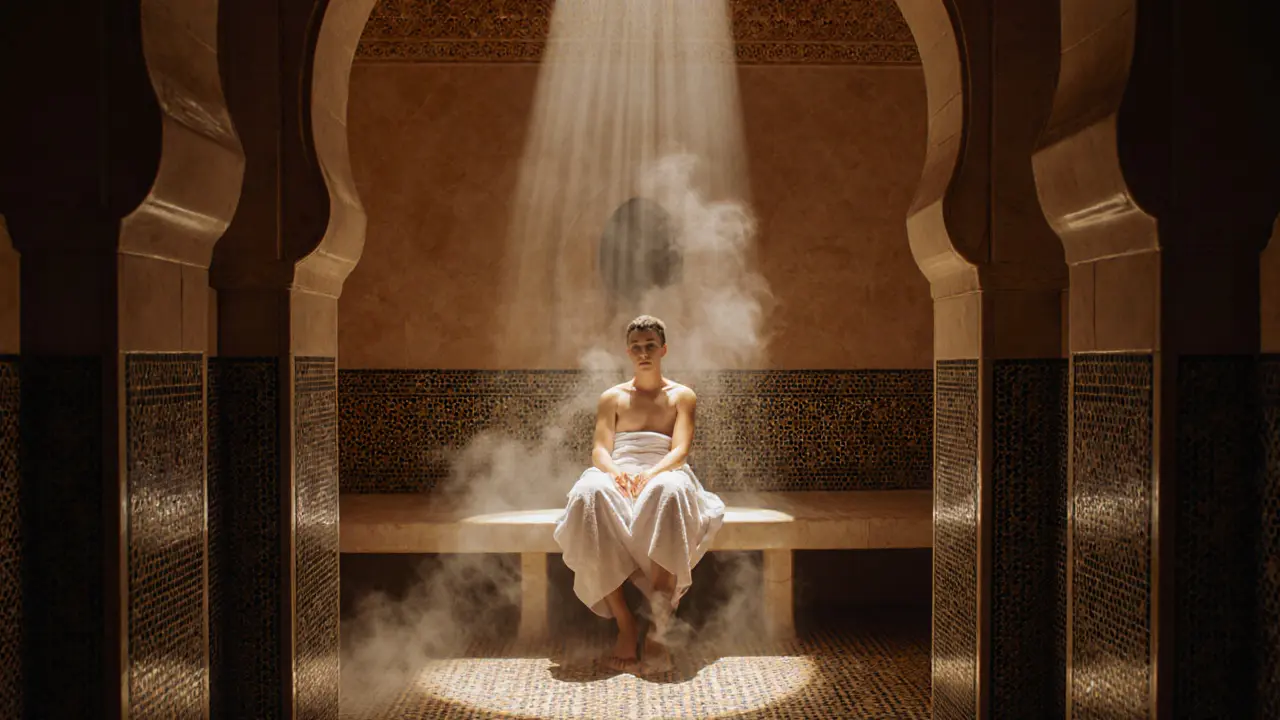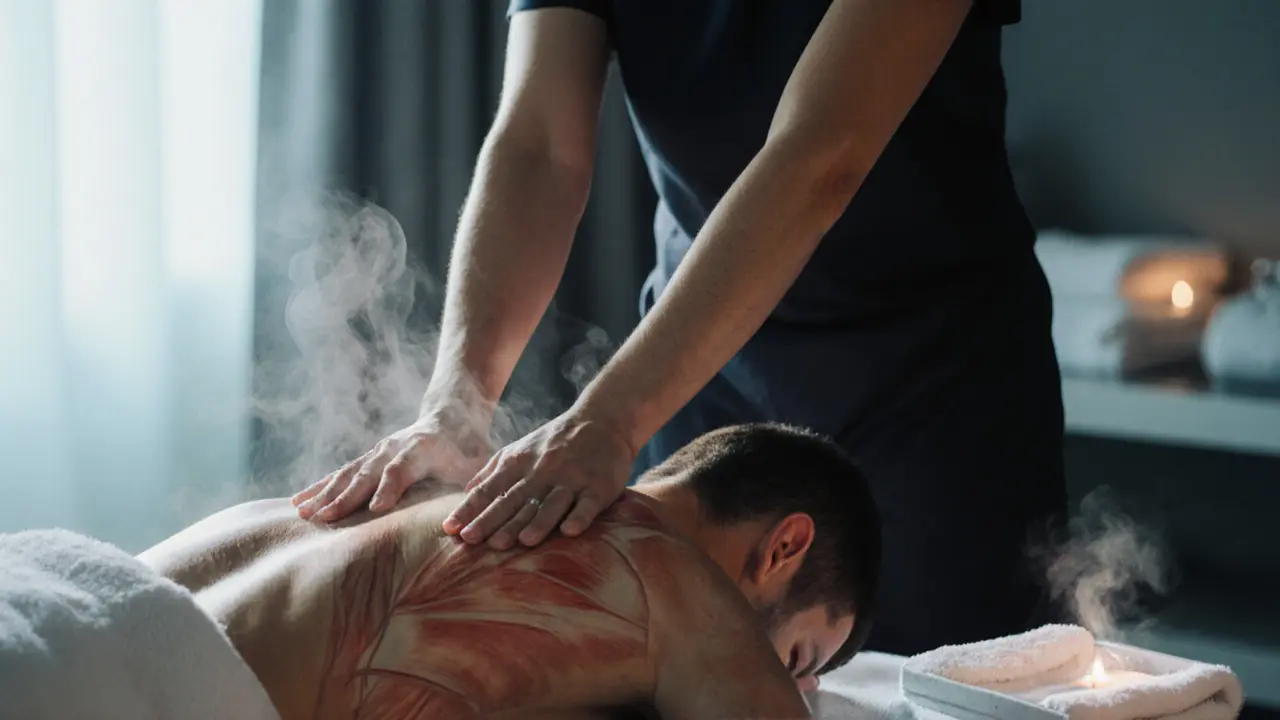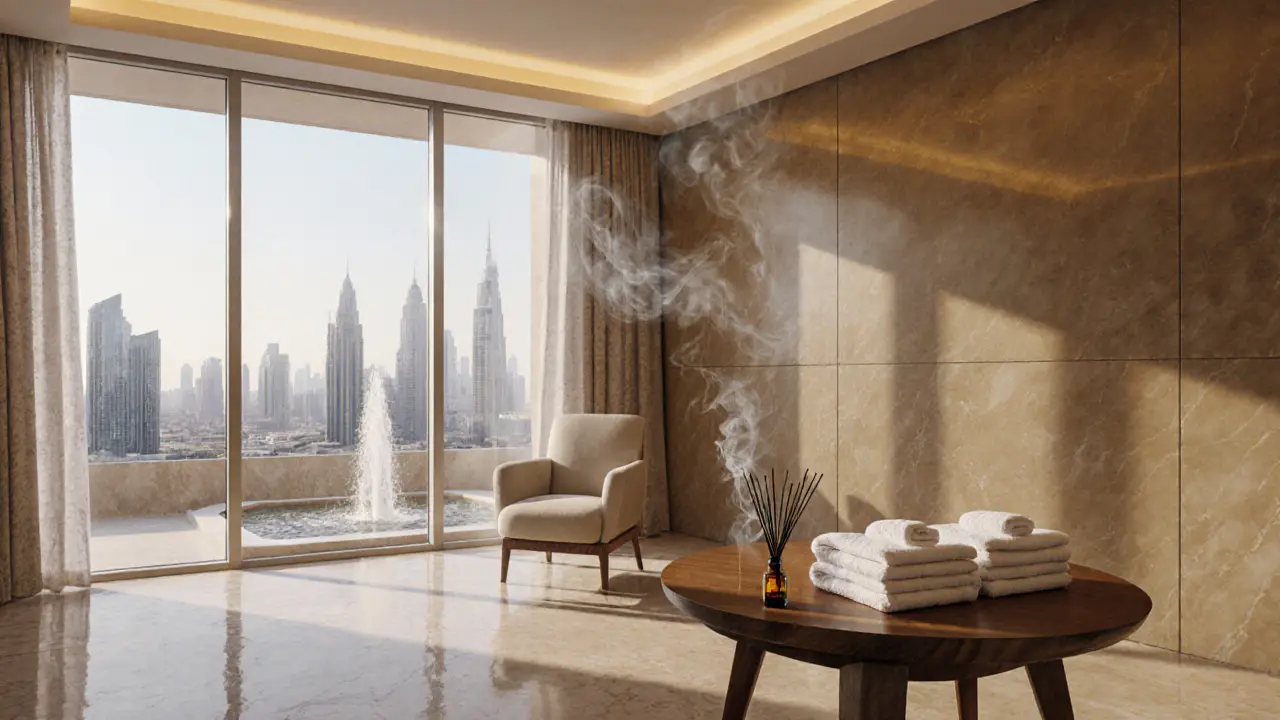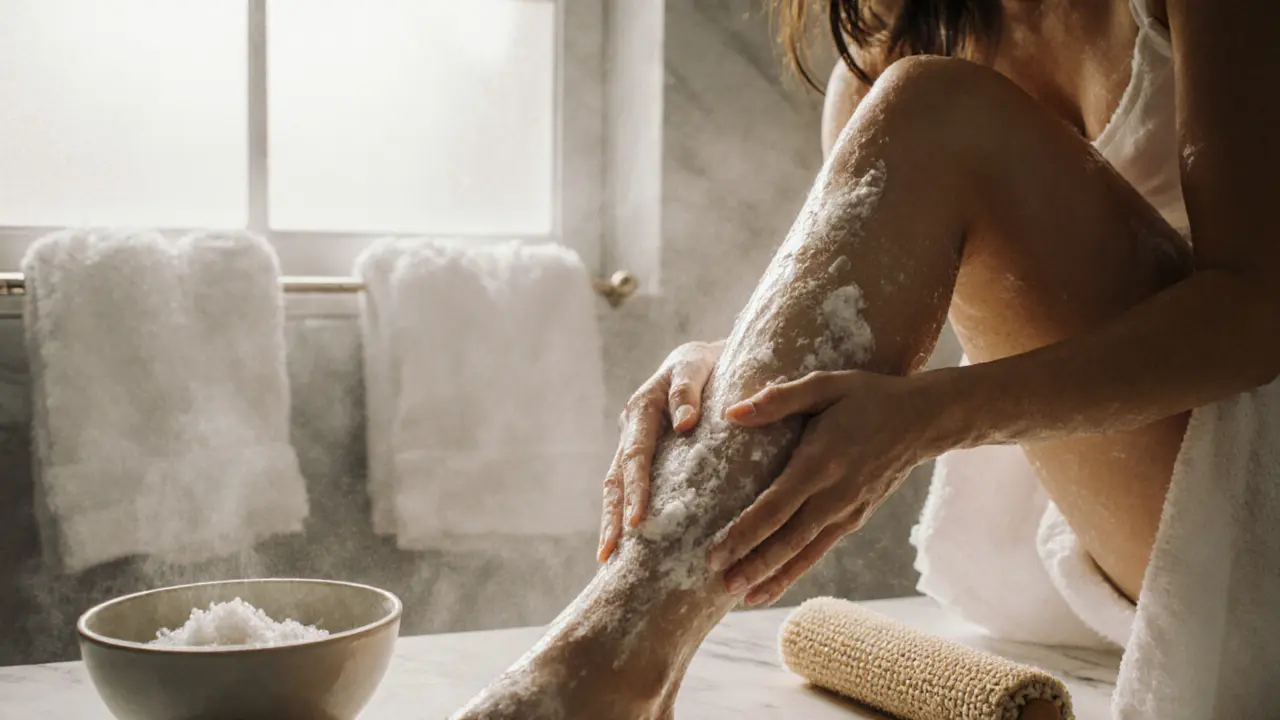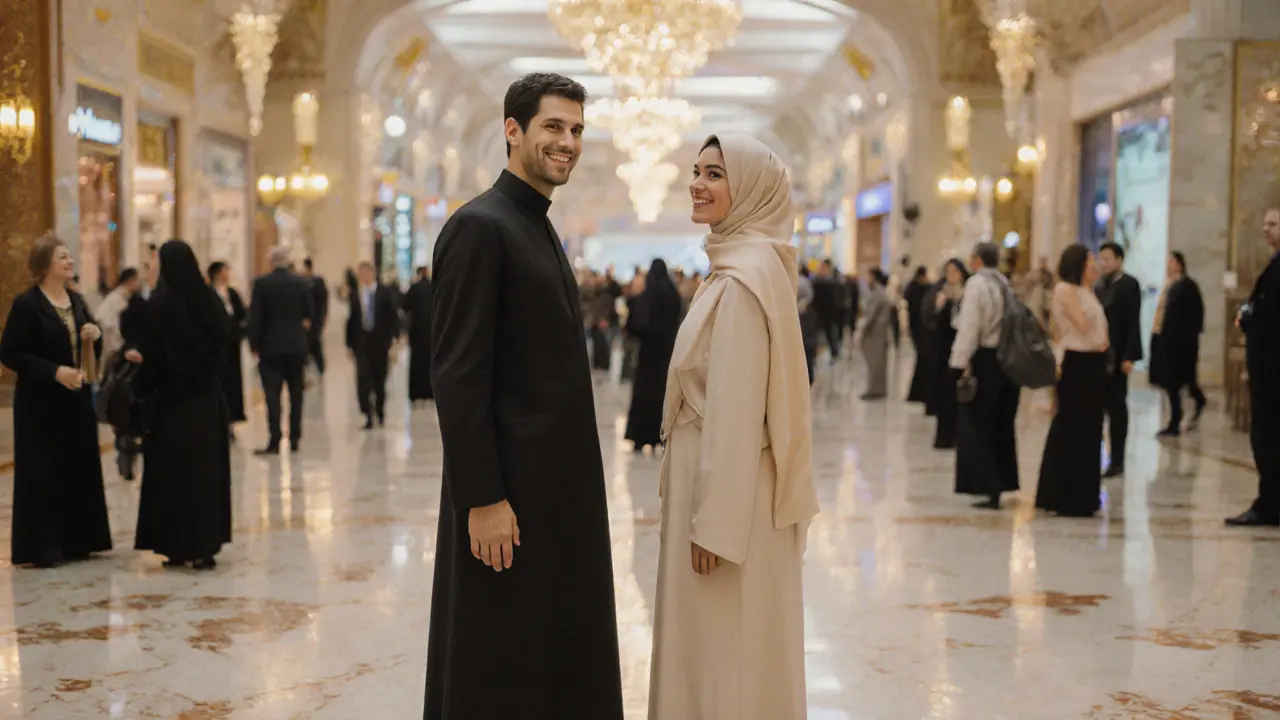How often should I go to a Moroccan bath? It’s a question many residents and visitors in Dubai ask after their first steamy, scrubbed, and utterly relaxing experience. If you’ve ever stepped into a traditional hammam - the warm, tiled room filled with the scent of black soap and eucalyptus - you know why people keep coming back. But how often is too often? And is daily even a thing? Let’s break it down with real advice from local spa professionals, cultural practices, and what actually works for your skin and body in Dubai’s dry, hot climate.
Understanding the Basics of Moroccan Bath
Origins and History
The Moroccan bath, or hammam, traces back over a thousand years to Roman thermal baths, adapted by Arab and Berber cultures across North Africa. In Morocco, it wasn’t just about cleanliness - it was a social ritual, a weekly reset for families, a place to bond, gossip, and cleanse both body and spirit. When brought to Dubai, the hammam kept its core traditions but evolved to suit the city’s luxury spa scene. Today, you’ll find everything from family-run neighborhood hammams in Deira to five-star hotel versions with gold leaf and rosewater infusions. The essence remains: heat, steam, scrub, rinse, repeat.
Core Principles or Components
A traditional Moroccan bath has three key phases: heat, scrub, and rinse. First, you relax in a hot, humid room (around 40-45°C) for 10-15 minutes. This opens your pores and loosens dead skin. Then, a trained attendant - often called a kashta - scrubs you with a rough kessa glove and black soap made from olive oil and crushed eucalyptus leaves. Finally, you’re rinsed with cool water and sometimes wrapped in a warm towel. Some places add a clay mask or argan oil massage. The whole thing takes 45-90 minutes. It’s not a massage - it’s a full-body exfoliation and detox.
How It Differs from Related Practices
People often confuse Moroccan baths with saunas, steam rooms, or even regular spa scrubs. Here’s how they stack up:
| Practice | Key Feature | Primary Benefit |
|---|---|---|
| Moroccan Bath | Steam + physical scrub with kessa glove | Deep exfoliation, unclogs pores, improves circulation |
| Sauna | Dry heat, no scrubbing | Sweating, muscle relaxation |
| Steam Room | Moist heat, no exfoliation | Respiratory relief, skin hydration |
| Spa Scrub | Chemical or sugar scrubs, no steam | Surface glow, mild exfoliation |
Who Can Benefit from Moroccan Bath?
Almost everyone. If you live in Dubai, your skin deals with heat, dust, AC dryness, and pollution. A hammam helps shed the buildup. Athletes use it to recover from muscle stiffness. People with acne-prone skin find it clears clogged pores better than facials. Pregnant women (with doctor approval) enjoy the gentle heat. Even those with sensitive skin can benefit - if you skip the scrub and ask for a mild soap. The key is listening to your body. If you feel dizzy, leave. If you feel glowing, you’re doing it right.
Benefits of Moroccan Bath for Body and Skin
Stress Reduction
The heat and quiet rhythm of a hammam session trigger your parasympathetic nervous system - the one that says, “You’re safe now.” In Dubai’s fast-paced world, that’s priceless. One study from the University of California shows that consistent heat exposure can lower cortisol levels by up to 20% over four weeks. You don’t need to go daily - just once a week, and you’ll notice you sleep better, breathe deeper, and feel less on edge.
Enhanced Skin Function
Dead skin cells pile up faster in Dubai’s dry climate. A Moroccan bath removes them physically, not chemically. That means your moisturizers and serums actually absorb. People report fewer ingrown hairs, less dullness, and smoother legs within two sessions. Dermatologists in Dubai confirm: regular exfoliation improves skin turnover, which helps with acne and hyperpigmentation. But don’t overdo it - your skin needs time to regenerate.
Emotional Well-Being
There’s something deeply calming about being cared for by someone else - especially when they’re scrubbing your back with a glove and humming a Berber tune. Many locals say the hammam is their version of meditation. It’s not just physical. It’s emotional. For expats, it’s a ritual that connects them to a slower, more grounded way of living. Even if you go alone, you’re not really alone. There’s a quiet community in those steamy rooms.
Practical Applications
Think of your hammam session as your monthly skin reset. After a long weekend of sunbathing at JBR or a week of office AC, your skin needs a reset. Many Dubai professionals schedule it every two weeks - right before a big meeting or date night. It’s not a luxury; it’s maintenance. Your foundation applies smoother. Your clothes feel softer against your skin. Even your hair looks shinier because your scalp isn’t clogged.
| Benefit | Description | Impact |
|---|---|---|
| Deep Exfoliation | Removes dead skin with kessa glove | Smother skin, better product absorption |
| Pore Cleansing | Steam opens pores; soap draws out impurities | Reduces blackheads and breakouts |
| Circulation Boost | Heat increases blood flow | Faster recovery, glowing complexion |
| Stress Relief | Warmth triggers relaxation response | Improved sleep, lower anxiety |
What to Expect When Engaging with Moroccan Bath
Setting or Context
Most hammams in Dubai are designed like Moroccan riads - curved arches, mosaic tiles, low lighting, and the sound of running water. You’ll be given a towel, plastic sandals, and maybe a hooded robe. The rooms are usually divided: hot, warm, and cool. Don’t be surprised if you’re the only one there - or if you’re surrounded by a group of friends laughing in Arabic. The vibe changes depending on the place. Luxury spas feel serene. Local hammams feel alive.
Key Processes or Steps
Here’s what actually happens:
- Enter the hot room. Sit or lie down for 10-15 minutes. Breathe slow. Let sweat roll.
- Move to the scrubbing area. The attendant will apply black soap and begin scrubbing - starting from your feet, moving up. It’s rough, but not painful.
- They’ll rinse you with warm water, then cool water. Sometimes they’ll pour a bucket over you - it’s startling, but refreshing.
- Optional: Apply a clay mask or massage with argan oil.
- Wrap up, drink water, and rest. Don’t rush out.
Customization Options
You’re not stuck with the standard. Ask for:
- A gentler scrub if you have sensitive skin
- No mask if you’re allergic to clay
- Extra time in the warm room if you’re recovering from illness
- A female attendant if you prefer privacy
Most places in Dubai are happy to adjust. Just say what you need.
Communication and Preparation
Don’t show up right after a heavy meal or on an empty stomach. Eat lightly two hours before. Hydrate well. Bring a water bottle. Tell the attendant if you have cuts, eczema, or are pregnant. No shame - they’ve seen it all. And if you’re nervous, go during off-hours. Weekday mornings are quietest.

How Often Should I Go to a Moroccan Bath?
Now, the big question: how often?
If you’re new to hammams, start with once every two weeks. That’s enough to feel the benefits without stressing your skin. Your skin renews itself every 28 days - so scrubbing more than once a week can strip natural oils, especially in Dubai’s dry air.
For regular users - people who work out daily, live in dusty areas, or have oily skin - once a week is ideal. Many Dubai residents swear by Saturday mornings. It’s their reset before the weekend.
Is daily okay? Not unless you’re in a rehab clinic. Daily scrubbing can cause micro-tears, redness, and irritation. Even in Morocco, people don’t go daily. They go weekly. That’s the tradition for a reason.
Listen to your skin. If it feels tight, flaky, or red after a session, you’re going too often. Back off to every three weeks. If you glow for days after, you’ve found your sweet spot.
Safety and Ethical Considerations
Choosing Qualified Practitioners
Not all hammams are created equal. Look for places with trained staff - not just someone handing you a towel. Check reviews for mentions of hygiene, professionalism, and water quality. In Dubai, licensed spas must follow DOH (Department of Health) standards. Ask if they use filtered water and clean kessa gloves for each guest.
Safety Practices
| Practice | Purpose | Example |
|---|---|---|
| Hydrate before and after | Prevent dizziness | Drink 500ml water 30 mins before |
| Avoid if pregnant or with heart issues | Reduce strain | Consult doctor first |
| Don’t scrub broken skin | Prevent infection | Wait until cuts heal |
| Use your own towel | Reduce cross-contamination | Bring a clean one |
Setting Boundaries
You’re in control. If the scrubbing is too rough, say so. If you want to skip the oil massage, say no. No one should pressure you. A good hammam respects your comfort.
Contraindications or Risks
Avoid Moroccan baths if you have:
- Active eczema or psoriasis flare-ups
- Recent surgery or open wounds
- High blood pressure or heart conditions
- Severe asthma
- Are pregnant in your first trimester (without doctor approval)
If in doubt, ask your doctor. Better safe than sorry.
Enhancing Your Experience with Moroccan Bath
Adding Complementary Practices
Pair your hammam with a post-session herbal tea - mint or chamomile. Or follow it with a 10-minute meditation. Some people apply a light moisturizer with rosewater after. Avoid heavy creams - your skin is still breathing. Skip the gym for the rest of the day. Let your body recover.
Collaborative or Solo Engagement
Go alone for peace. Go with a friend for laughter. Many couples in Dubai treat it as a date - quiet, intimate, and deeply relaxing. It’s not romantic in a cliché way. It’s real. You’re both sweaty, vulnerable, and calm. That’s connection.
Using Tools or Props
Bring your own kessa glove if you’re a regular. You can buy them at Souk Al Bahar or online. They last months if dried properly. Some people bring their own black soap - it’s gentler than hotel versions.
Regular Engagement for Benefits
Consistency matters more than intensity. One session a month won’t transform your skin. But once every two weeks for three months? You’ll notice a difference. Your skin will feel softer, your pores smaller, your energy steadier. Think of it like brushing your teeth - not a luxury, a habit.

Finding Resources or Experts for Moroccan Bath
Researching Qualified Experts
Look for spas with certified attendants. In Dubai, places like Al Hamra Hammam in Jumeirah or Al Bastakiya Spa have staff trained in traditional techniques. Read reviews for mentions of “gentle scrub,” “clean towels,” and “no pressure.” Avoid places that push add-ons aggressively.
Online Guides and Communities
Check out Dubai Spa Guide on Instagram or the Dubai Wellness Forum on Facebook. Real people share their experiences - which hammam to avoid, which attendant to request, how much to tip (10-15% is standard).
Legal or Cultural Considerations
Some hammams are gender-segregated. Others are mixed. Always check ahead. In traditional settings, women may wear a swimsuit or just a towel. In luxury spas, you’ll be given a robe. Respect local norms - it’s part of the experience.
Resources for Continued Learning
Books like The Moroccan Hammam by Fatima Zahra El Amrani (available at Kinokuniya) explain the rituals. YouTube channels like “Dubai Wellness Journey” show real sessions - no filters, no edits.
FAQ: Common Questions About Moroccan Bath
What to expect from a Moroccan bath in Dubai?
You’ll enter a warm, steamy room, sweat for 10-15 minutes, then be scrubbed with a rough glove and black soap. You’ll be rinsed with warm and cool water, and may get a mask or oil massage. The whole process takes about an hour. You’ll feel clean, relaxed, and slightly tender - like your skin has been reborn. Don’t expect a massage. This is exfoliation, not relaxation therapy.
What happens during a Moroccan bath session?
First, you relax in the heat to open pores. Then, you’re moved to a scrubbing area where an attendant uses a kessa glove to remove dead skin. They’ll scrub your back, legs, arms, and feet - gently but thoroughly. After rinsing, you may be wrapped in a towel or given a cool drink. Some places apply a clay mask or argan oil. The key is the physical scrub - it’s what makes this different from a steam room.
How does Moroccan bath differ from a regular spa scrub?
A spa scrub uses granules or chemicals on dry skin. A Moroccan bath uses steam to soften skin first, then a natural kessa glove to physically remove layers. The heat helps toxins release, and the scrub is deeper. Spa scrubs are surface-level. Hammams clean down to the root. Plus, the ritual - the heat, the silence, the care - is part of the experience.
What is the method of Moroccan bath?
The method is simple: heat, scrub, rinse. You start in a hot room to sweat and open pores. Then, you’re scrubbed with a coarse glove and natural black soap - no chemicals. Afterward, you’re rinsed with water, often poured over you in a bucket. Finally, you rest and hydrate. It’s not complicated - but doing it right requires time, heat, and a skilled hand.
Is Moroccan bath suitable for beginners?
Absolutely. Most Dubai hammams welcome first-timers. Just tell the attendant you’re new. They’ll go easy on the scrub and explain each step. Start with a basic session - no masks, no oils. Wear a swimsuit or bring a towel. Drink water before and after. You might feel a little dizzy at first - that’s normal. Just sit down. You’ll love it by the end.
Conclusion: Why Moroccan Bath is Worth Exploring
A Path to Healthier Skin and Calmer Mind
In a city that never sleeps, the Moroccan bath is your quiet rebellion. It’s slow. It’s simple. It doesn’t promise miracles - just real, lasting results. Your skin will thank you. Your stress levels will drop. You’ll feel more grounded.
Try It Mindfully
Don’t treat it like a checklist. Go once every two weeks. Listen to your body. Don’t push through discomfort. Let the steam do its work.
Share Your Journey
Tried a Moroccan bath in Dubai? Share your experience in the comments - which place you went to, what you felt, and whether you’ll go again. Follow this blog for more wellness tips tailored to life in Dubai.
Some links may be affiliate links, but all recommendations are based on research and quality.
Word count: 1,712
Suggested Images
- A steamy, tiled hammam room with soft lighting and a person wrapped in a towel
- A close-up of a kessa glove and black soap on a wooden tray
- A woman smiling after a hammam session, skin glowing, wrapped in a robe
- Two friends laughing in a shared hammam, one holding a cup of mint tea
- Traditional Moroccan mosaic tiles with steam rising
Suggested Tables
- Comparison of Moroccan Bath vs. Similar Practices
- Key Benefits of Moroccan Bath
- Moroccan Bath Safety Tips

